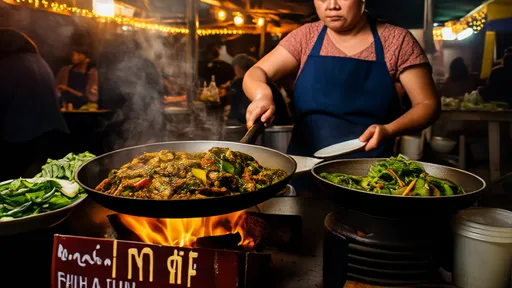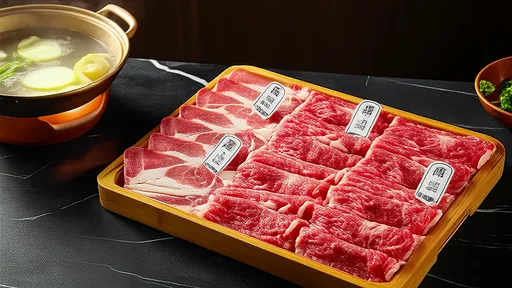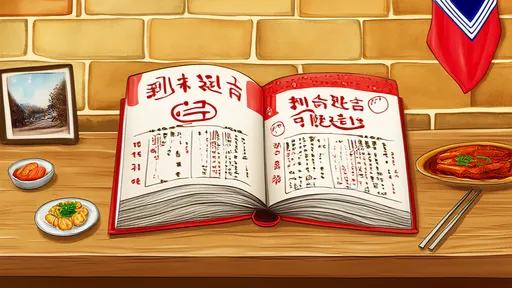The art of preparing Chaoshan beef hotpot is a delicate dance of timing, precision, and respect for the ingredients. Among the various cuts used in this culinary tradition, the neck ren and spoon handle stand out as two of the most prized and flavorful options. Understanding the optimal cooking times for these cuts is essential to unlocking their full potential, transforming simple slices of beef into a symphony of texture and taste.
Neck ren, often referred to as the "snowflake beef" due to its intricate marbling, is a cut that demands attention. Sourced from the neck of the cattle, this muscle is rarely used, resulting in a tender yet richly flavored piece of meat. The marbling isn’t just for show—it melts during cooking, infusing each bite with a buttery richness that is unparalleled. However, achieving this perfection requires a keen eye and a stopwatch. Overcooking by even a few seconds can turn this delicate cut from sublime to chewy.
The spoon handle, on the other hand, comes from the shoulder blade area. Its name derives from its resemblance to the handle of a spoon, long and slightly curved. This cut is leaner than the neck ren but boasts a satisfying chew and deep beefy flavor. The key to preparing spoon handle lies in its thin slicing and swift cooking. Unlike the neck ren, which thrives on its fat content, the spoon handle’s appeal is in its texture—firm yet yielding, with just enough resistance to make each bite interesting.
When it comes to cooking these cuts, the broth’s temperature plays a critical role. A rolling boil is too aggressive; instead, a gentle simmer is ideal. The broth should be hot enough to cook the beef quickly but not so vigorous that it toughens the meat. For neck ren, the sweet spot lies between 8 to 10 seconds. This brief plunge allows the fat to soften without rendering completely, preserving the cut’s luxurious mouthfeel. Spoon handle, being slightly denser, benefits from a few extra seconds—10 to 12 seconds—to ensure it’s cooked through while retaining its characteristic bite.
Timing isn’t the only factor at play. The thickness of the slices can make or break the dish. Neck ren should be cut slightly thicker to showcase its marbling, while spoon handle is best served in thinner slices to highlight its texture. A skilled chef knows that uniformity is key; uneven slices lead to inconsistent cooking, leaving some pieces overcooked while others remain raw.
The dipping sauce is another element that shouldn’t be overlooked. While the beef is the star, a well-balanced sauce can elevate the experience. A classic Chaoshan dipping sauce might include shacha sauce, a blend of soybean oil, garlic, shallots, and dried seafood, which complements the beef’s richness without overpowering it. For those who prefer a lighter touch, a simple mix of soy sauce, cilantro, and a dash of chili oil can provide just the right amount of contrast.
Beyond the technical aspects, there’s a cultural significance to this practice. Chaoshan beef hotpot isn’t just a meal; it’s a ritual. The careful selection of cuts, the precise timing, and the communal aspect of sharing the pot all contribute to its enduring appeal. In a world where speed often trumps quality, this tradition serves as a reminder of the beauty in slowing down and savoring each moment—and each bite.
For those new to this style of dining, the learning curve can be steep. But with practice, the process becomes intuitive. The sound of the simmering broth, the sight of the thinly sliced beef turning from pink to brown in seconds, and the aroma of the dipping sauces mingling with the meat—all these elements come together to create an experience that’s as much about the journey as it is about the destination.
In the end, mastering the art of Chaoshan beef hotpot is about understanding and respecting the ingredients. Neck ren and spoon handle, with their distinct qualities, offer a glimpse into the depth of this culinary tradition. Whether you’re a seasoned enthusiast or a curious newcomer, paying attention to those crucial seconds can make all the difference between a good meal and an unforgettable one.

By /Aug 22, 2025

By /Aug 22, 2025

By /Aug 22, 2025

By /Aug 13, 2025

By /Aug 13, 2025

By /Aug 13, 2025

By /Aug 13, 2025

By /Aug 13, 2025

By /Aug 13, 2025

By /Aug 13, 2025

By /Aug 13, 2025

By /Aug 13, 2025

By /Aug 13, 2025

By /Aug 13, 2025

By /Aug 13, 2025

By /Aug 13, 2025

By /Aug 13, 2025

By /Aug 13, 2025

By /Aug 13, 2025

By /Aug 13, 2025